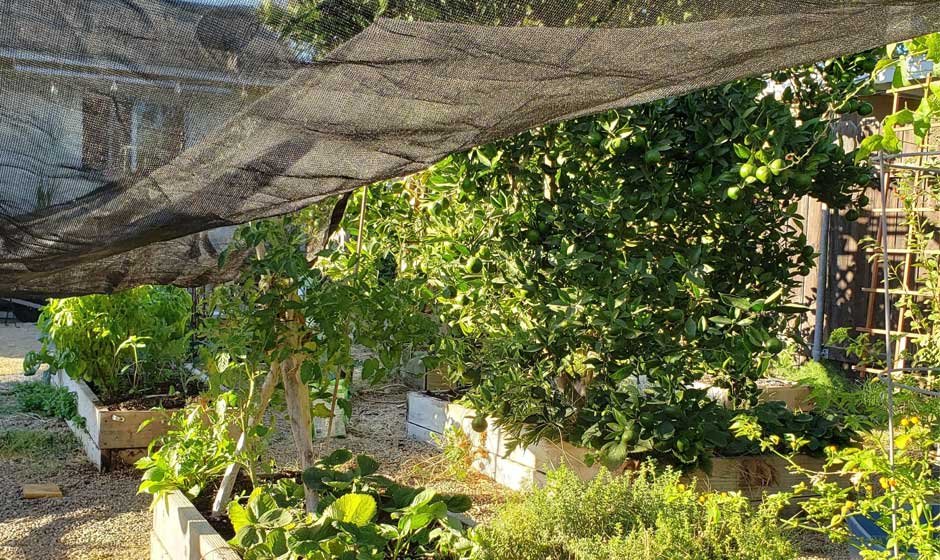Summer is when gardens come into their own, with plenty of colourful blooms and lush green trees. But to ensure your garden flourishes at this time of year, you’ll need to consider how to tackle the rising temperatures and pests that appear in the warmer months.
Prolonged heat can exhaust your plants, dry out your soil, and attract a swarm of summer pests. With temperatures forecasted to be above average in the coming weeks, now is the perfect time to focus on prepping our outdoor space.
The good news is that a few smart habits and some natural interventions can help you keep your garden healthy, resilient and productive throughout the hottest spells of the season.
Managing heat stress
Plants lose moisture rapidly during hot, sunny days, especially when temperatures remain high overnight. If you water at midday, much of it will evaporate before it reaches the roots. Water your plants early in the morning or after sunset, when the ground is cooler and the moisture can soak in properly. A good soak every few days encourages deeper roots, which help your plants cope with dry spells better than frequent light watering.
For lawns, it’s safe to let the grass turn brown temporarily during a heatwave. Healthy grass will recover with rain. You can help your lawn bounce back by leaving grass slightly longer when mowing, which shades the soil and retains moisture. Around beds and borders, mulch with bark chips, compost or grass clippings to lock moisture into the soil and reduce evaporation.
Heat-proofing structures
Greenhouses and polytunnels provide the perfect growing conditions for plants, but proper ventilation is essential. Open vents and doors early each morning and keep them open into the evening to allow cooler air to circulate.
You can reduce heat buildup further by fixing shade netting to the outside of your greenhouse or polytunnel using. This option protects your plants from extreme weather and pests.
For individual plants, drape shade netting over tender crops during peak heat to prevent sun scorch and stress.
Identifying and controlling common summer pests
The heat also brings a wave of pests that thrive in warm, dry conditions. Some pests to be aware of include:
- Greenfly:These multiply quickly on soft new growth
- Flying ants:You’ll seen them appear in large numbers around mid-July.
- Leatherjacket larvae:These live in the soil and can damage lawns by feeding on grassroots.
To avoid harsh chemicals, try essential-oil sprays made from neem, peppermint or garlic as these can deter soft-bodied insects like aphids without harming beneficial creatures like bees. For soil-based pests like leatherjackets, water in nematodes (microscopic worms) during the evening when the soil is damp and cool, and they can move freely.
You don’t have to tackle pests alone. As well as nematodes, which deal with slugs and root-dwelling grubs, ladybirds, hoverflies and lacewings love feasting on aphids. Attract these natural allies by planting pollen-rich flowers such as calendula, alyssum or fennel among your vegetables.
Physical barriers are another effective way to protect crops. As well as shade netting fixed over your polytunnel, try introducing cloches placed over leafy veg or fine netting to keep cabbage whites and other flying insects away.
These tools also guard against sudden heavy rain or hail, which can damage tender shoots during the changeable British summer.
Practical low-cost hacks for pest deterrence
If you’re working with a small budget, you still have plenty of ways to fend off pests. For instance, burying banana skins near ant nests can draw them away from growing areas because they dislike the gasses released as the skins break down.
To keep insects off patio pots or greenhouse trays, wipe surfaces with a few drops of peppermint or citronella oil diluted in water. These scents repel a range of pests, including whitefly and gnats.
You can also reuse household items: place copper tape around pots to deter slugs or scatter crushed eggshells around your lettuces. Small actions, done consistently, can make a big difference in keeping your garden comfortable and pest-resistant right through to the cooler months.










